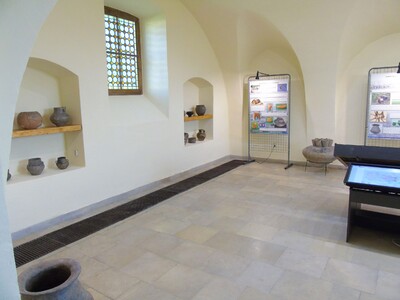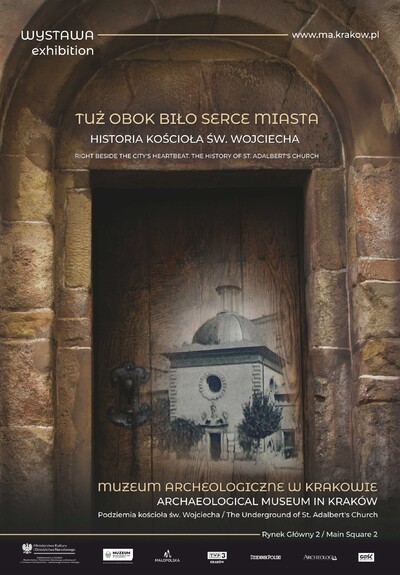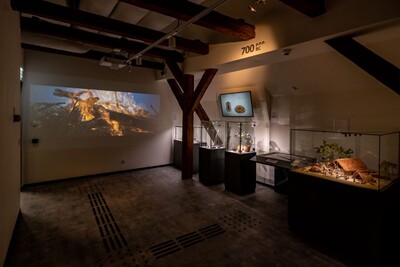The Archaeological Museum in Kraków is the oldest archaeological museum in Poland. It was created as the Museum of Antiquities under the initiative of intellectuals from Kraków gathered in the Kraków Scientific Society (henceforth: KSS). The deed of appointment of the museum was written on 18th February 1850, designating the members of the founding committee which included: Józef Muczkowski – the director of the Jagiellonian Library (chairperson of the committee), Karol Kremer – the director of building the Republic of Kraków (secretary), Wincenty Pol – a poet and a professor of the first Polish chair of geography at the Jagiellonian University, and Teofil Żebrawski – an architect, an inspector of land and water transport systems. For the purposes of the created institution, documents were prepared for the national authorities in which the project of the “priority right to all excavated objects found by chance” was presented. In 1857, the first Antiquity Exhibition was organised in Kraków (in the Lubomirski Palace at 17 św. Jana street), during which the “relics of the past” donated by Polish people were presented, among them the statue of “Światowid” discovered in Zbruch, which has become the symbol of the museum.
For several decades, the museum operated as a branch of: the KSS, the Academy of Arts and Sciences (henceforth: AU), the Polish Academy of Arts and Sciences (henceforth: PAU) and the Polish Academy of Sciences (henceforth: PAN).
In 1891, the Archaeological Museum became an independent specialist institution of the AL. In 1955, the museum became an independent unit under the Ministry of Culture and the Arts. In 1958, it was subordinated to the National Council of the city of Kraków, and in 1990-1998 to the Voivode of Kraków. In 1999, the Museum became a self-governing institution, currently subordinate to the Marshal Office of the Małopolska Region.
| Day of the week | Opening hours | ||
|---|---|---|---|
| Tuesday | 09:00 - 17:00 | ||
| Wednesday | 09:00 - 16:00 | ||
| Thursday | 09:00 - 17:00 | ||
| Friday | 09:00 - 16:00 | ||
| Saturday | 11:00 - 16:00 | ||
| Sunday | 11:00 - 16:00 | ||
| Holidays | Opening hours |
|---|---|
| 2025.04.20 (Sunday) | x |
| 2025.04.21 (Monday) | x |
| 2025.05.01 (Thursday) | x |
| 2025.05.03 (Saturday) | x |
| 2025.06.19 (Thursday) | x |
| 2025.11.01 (Saturday) | x |
| 2025.11.11 (Tuesday) | x |
| 2025.12.25 (Thursday) | x |
| 2025.12.26 (Friday) | x |
| Day of the week | Opening hours | ||
|---|---|---|---|
| Tuesday | 10:00 - 17:00 | ||
| Wednesday | 10:00 - 17:00 | ||
| Thursday | 10:00 - 17:00 | ||
| Friday | 10:00 - 17:00 | ||
| Saturday | 11:00 - 15:00 | ||
| Sunday | 11:00 - 15:00 | ||
| Holidays | Opening hours |
|---|---|
| 2025.08.15 (Friday) | x |
| Tickets | ||
|---|---|---|
| normal | 12.00 PLN | |
| reduced | 8.00 PLN | |
| family | 35.00 PLN | maks. 4 osoby. min. 1 dziecko do l8. roku życia |
| Guide | |
|---|---|
| in Polish for a fee | 65.00 PLN |
| in English for a fee | 100.00 PLN |
| when? | name | where? | about what? | for free | for children | |
|---|---|---|---|---|---|---|
 | Archaeologists for Nowa Huta Permanent exhibition | The Nowa Huta Branch Osiedle Zielone 7 31-968 Kraków Małopolskie | archeology | yes | ||
 | The history of the Main Square in Kraków and the Church of St. Wojciech Permanent exhibition | Church of St. Wojciech Rynek Główny 2 31-042 Kraków Małopolskie | archeology, architecture, city | yes | ||
 | Pradzieje i średniowiecze Małopolski Permanent exhibition | Main Building ul. Senacka 3 31-002 Kraków Małopolskie | archeology, region | yes |